Wellness
The latest Wellness breaking news, comment, reviews and features from the experts at T3
Explore Wellness
-

Shark just launched its FlexStyle in a stunning burgundy winter edition
It would make the perfect Christmas gift for any beauty lover
By Lizzie Wilmot Published
-
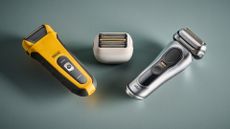
Best electric shaver 2025: top grooming options from Braun, Philips and more
Reduce stubble to rubble with the best electric shavers from Braun, Philips and other brands
By Lizzie Wilmot Last updated
-

Best beard trimmer 2025: premium shavers for stubble, short and long beards
Find the best beard trimmers, clippers and shapers to maintain a well-tended beard or on-trend stubble
By Bethan Morgan Last updated
-

Best body groomer 2025: find the top manscapers on the market
Find the best body groomers and the best manscaping groomers for your back, torso, downstairs and everywhere else...
By Lizzie Wilmot Last updated
-

Best duvet 2025: snuggle up for a great night's sleep
Find the best duvets to snuggle up with, from down, wool, synthetic and beyond
By Bethan Morgan Last updated
-

Best wake up light 2025: sunrise lamps to wake you up naturally
Banish the morning blues with the best wake up lights, from Lumie, Philips, Beurer and more
By Bethan Morgan Last updated
-

Shark FacialPro Glow review: incredible at-home skincare with professional results
Does this clever skincare gadget deliver? (Spoiler: yes)
By Lizzie Wilmot Published
-

This ‘world’s first’ wellness mat relieves pain and improves sleep – but it’ll cost you
Woojer introduces the MAT, a wellness-driven mattress topper
By Bethan Morgan Published
-

3 walking meditations you need to try to beat the winter blues
These walking meditations help improve your mood and move your body for a mental health boost
By Kat Bayly Published
-

9 best Christmas fragrances for men: festive scents from Tom Ford, Maison Margiela, Burberry and more
Smell like Christmas with T3’s picks of festive fragrances and colognes
By Bethan Morgan Published
-

My favourite sleep app just got an AI-powered sleep coach – and I can’t wait to try it
Sleep Cycle just gave its app an AI upgrade that could drastically improve your sleep
By Bethan Morgan Published
-

This Therabody eye mask helps me sleep at night – and it’s on sale for Cyber Monday
My favourite wellness product from the past year is cheaper than before
By Bethan Morgan Published
-

These 5 Black Friday mattress deals can save you $600 – discounts on Saatva, Purple, Leesa and more
Get up to $600 off on these cheap Black Friday mattress deals
By Bethan Morgan Published
-

This smart wearable acts as your own personal thermostat – and it looks great too
Embr’s new Wave 2 might look like a smartwatch but there’s much more to it
By Bethan Morgan Published
-
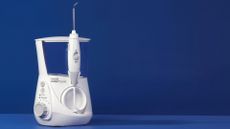
This Black Friday deal will make you smile all year and its 33% off right now
Waterpik's water flosser is one of the best options on the market and will keep your mouth clean for less
By Mat Gallagher Published
-

“Warm your feet or you won’t sleep!” – doctor explains how to keep feet warm during UK cold snap
Combat the UK’s cold snap with these quick feet warming tips
By Bethan Morgan Published
-

Silentnight Newbury 1000 Pocket Eco Pillow Top Mattress review: a supportive, plush option for the guest room
Be warned – the cosy pillow-top on this firm mattress might make visitors so comfortable they won’t want to leave
By Emily Peck Published
-

Therabody TheraFace Mask Glo review: a smarter, simpler take on LED skincare
The TheraFace Mask already had a strong reputation, so how well does the new Glo version perform? Let's find out
By Lizzie Wilmot Published
-
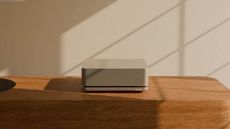
Ultrahuman Home gets major sleep upgrade and can even detect snoring
Ultrahuman Home can now track your sleep better than before
By Bethan Morgan Published
-
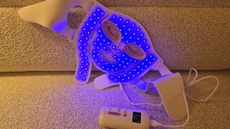
Renpho Artemis LED Light Soft Mask review: affordable, comfortable and effective LED therapy
This affordable LED face mask packs more lights than pricier rivals and promises serious skin perks – but does it deliver?
By Lee Bell Published
-

I'm a sleep expert – this is the trick I use to get out of bed when it's cold
This is the trick you need when you really don’t want to get out of bed
By Bethan Morgan Published
-
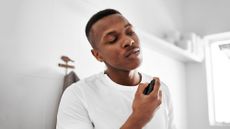
Best men’s fragrances and colognes 2025: find your signature scent or a meaningful gift
Find the best men's fragrances, including classics from Hugo Boss, Tom Ford, Chanel and more
By Bethan Morgan Last updated
-

The Philips OneBlade is the only beard trimmer you’ll ever need – and it’s now reduced for Black Friday
A firm favourite of ours has had a huge price cut ahead of next week
By Lizzie Wilmot Published
-
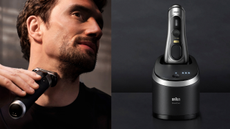
The Braun Series 9 Pro+ has been our top electric shaver for 1 entire year – here's why it's still our favourite
With its premium build and impressively close shave, the Braun Series 9 Pro+ remains one of the best electric shavers on the market
By Lizzie Wilmot Published
-

New Acqua di Parma Christmas collection is filled with gifts for the ones you really love
There's something for every taste here
By Sam Cross Published
-

3 tried and tested Black Friday mattress deals LIVE – big price cuts from Emma, OTTY, Eve and more
Save hundreds on a new sleep set-up with these Black Friday mattress deals
By Bethan Morgan Last updated
-

6 best boozy fragrances for men 2025: alcohol-inspired scents from Tom Ford, Givenchy and more
Who doesn’t want to smell like whiskey, right?!
By Bethan Morgan Published
-
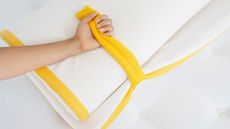
Best mattress topper 2025: give your old bed a new lease of life
Find the best mattress toppers to make your old mattress softer, firmer, and more luxurious
By Bethan Morgan Last updated
-

Best bed in a box mattress 2025: the most convenient sleep upgrade around
Discover the best bed in a box mattresses, all rolled up, boxed and delivered to your door
By Bethan Morgan Last updated
